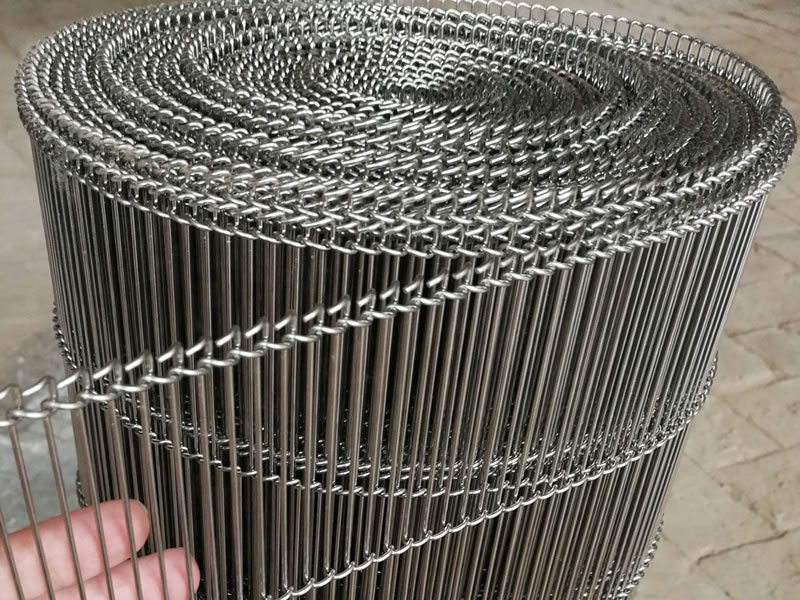A wire mesh conveyor belt is a type of conveyor system component made from interlinked metal wires, designed to facilitate the transportation of goods and materials in various industrial processes. These belts are characterized by their open mesh structure, which allows for excellent air and liquid flow, making them suitable for applications requiring drainage or airflow.
The production process of a wire mesh conveyor belt involves several key steps:
- Material Selection: Choosing high-quality metal wires such as stainless steel, carbon steel, or other alloys based on the required belt specifications and application.
- Wire Drawing: Reducing the diameter of the metal wires to the desired thickness through a series of drawing dies.
- Weaving or Welding: Interweaving the wires or welding them together to form the mesh structure, using techniques like spiral weaving, rod reinforcement, or flat wire weaving.
- Edge Treatment: Securing the edges of the conveyor belt to prevent fraying and ensure durability. This can involve welding or folding techniques.
- Surface Treatment: Applying coatings or treatments such as galvanizing, powder coating, or polishing to enhance corrosion resistance and longevity.
- Cutting and Sizing: Cutting the mesh to the required dimensions and shaping it to fit the specific conveyor system.
- Quality Inspection: Conducting thorough inspections to ensure the belt meets all specifications and quality standards.
- Packaging and Shipping: Packaging the finished conveyor belts securely for transportation to the end user.




